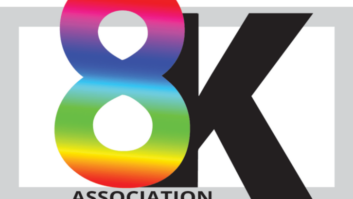Despite the pleading of a popular ’70s Paul Simon song, Kodak announced Monday that it is taking your Kodachrome away.
The photo giant said that after fading sales and the shuttering of processing labs capable of handling the 74-year-old color film stock, it expects to run out of the final rolls by early this fall.
The one-time king of color film so revolutionized the business of its day it became ingrained in American culture, and was used by the top professional photographers to capture some of the world’s most memorable images.
“Sales of Kodachrome Film, which became the world’s first commercially successful color film in 1935, have declined dramatically in recent years as photographers turned to newer Kodak Films or to the digital imaging technologies that Kodak pioneered,” the company said in statement.
Kodak said the film today represents “just a fraction of one percent of Kodak’s total sales of still-picture films.”
“Kodachrome Film is an iconic product and a testament to Kodak’s long and continuing leadership in imaging
technology,” said Mary Jane Hellyar, Kodak’s film, photofinishing and entertainment group president. “It was certainly a difficult decision to retire it, given its rich history. However, the majority of today’s photographers have voiced their preference to capture images with newer technology — both film and digital. Kodak remains committed to providing the highest-performing products — both film and digital — to meet those needs.”
Kodak said it currently derives about 70 percent of its revenues from commercial and consumer digital businesses, but it remains “the global leader in the film business.”
Over the years, newer, more advanced film products have displaced Kodachrome in the shrinking market. Kodak said it has introduced seven new professional still films and several new Vision2 and Vision3 motion picture films in the past three years.
Those professionals and consumers still shooting on film will also find ample supplies of finer-grain films, such as Ektachrome E100G and Ektar 100 Film, Kodak said.
As a tribute to the famous film, Kodak said it will donate the last rolls to the George Eastman House International Museum of Photography and Film in Rochester, which houses the world’s largest collection of cameras and related artifacts.
Professional photographer Steve McCurry, noted among other things for his Kodachrome-based image of a young Afghan girl that was used on the cover of National Geographic Magazine in 1985, will shoot one of the last rolls and the images will be donated to Eastman House, Kodak said.
Kodak has created a gallery of iconic images, including the Afghan girl and other McCurry photos, as well as others from professional photographers Eric Meola and Peter Guttman on its Web site: www.kodak.com/go/kodachrometribute. Special podcasts featuring McCurry and Guttman will also be featured on the Web site.
Kodak pointed out that Kodachrome “is a complex film to manufacture and an even more complex film to process. There is only one remaining photofinishing lab in the world — Dwayne’s Photo in Parsons, Kan. — that still processes the film.
Kodak estimated that current supplies of Kodachrome Film should last until early fall. Dwayne’s Photo has indicated it will continue to offer processing for the film through 2010.
But, as we look back on all the crap that we learned in high school, we can still hear Paul Simon’s fading refrain: “Mama, don’t take my Kodachrome away.”













